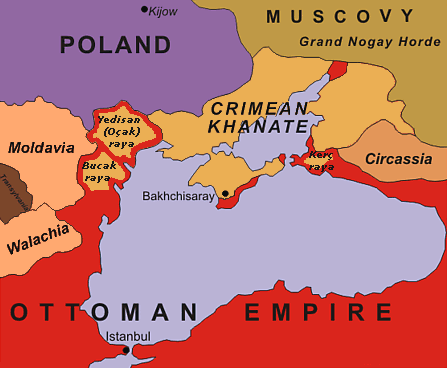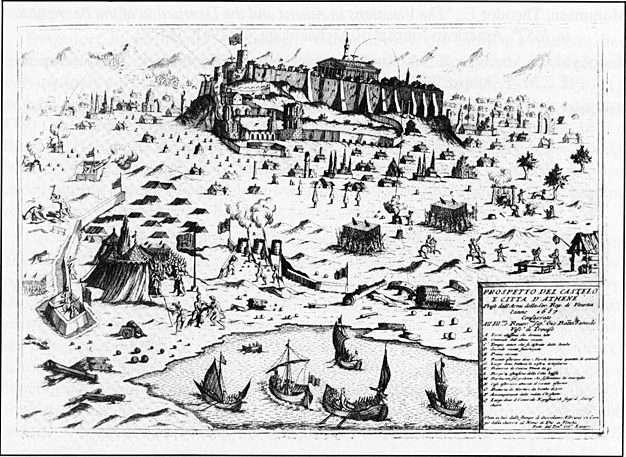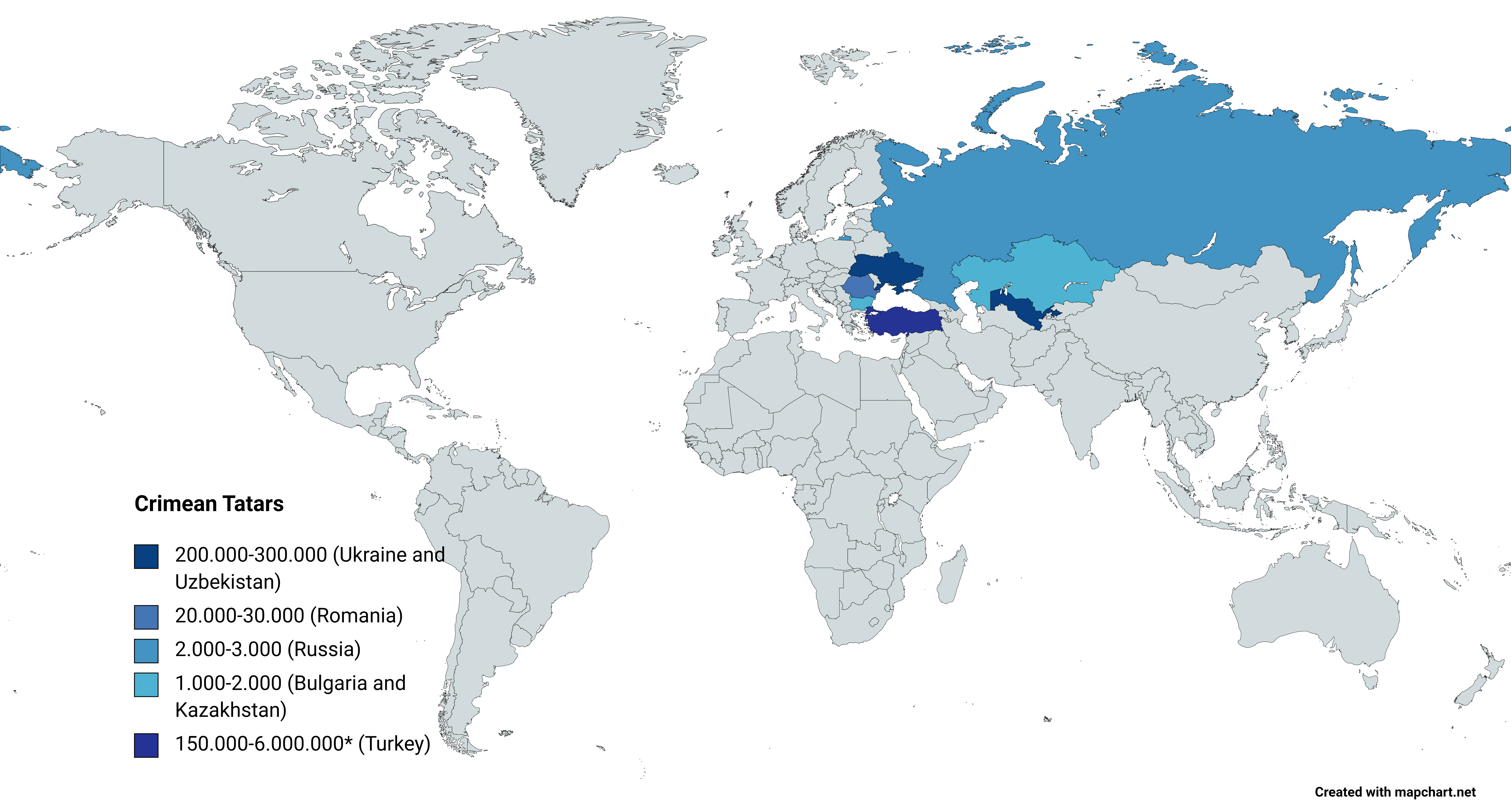|
Siege Of Akkerman
The siege of Akkerman took place in 1770 between 24 September and 6 October. Brigadier Baron Igelström, dispatched from the corps of Prince Repnin with a detachment (4 infantry regiments, a squadron of hussars, and 2,5 Cossack '' sotnia'') entered on September 24 in the suburb of Akkerman, laid an artillery battery and advanced a post (2 companies, 2 cannons, and 70 men Cossacks) under the command of Captain Nolcken to Dniester Estuary, in order to cut off the besieged from getting communication with Ochakov (Özi/Özü), from where Ottoman reinforcements were expected. On September 26 Nolcken defeated 1,000 Crimeans and forced them to take refuge on an island lying against the Dniester's mouth; at that time Turkish ships headed for Akkerman entered the mouth, but, met by artillery fire of 2 Nolcken's cannons, the ships sailed back towards the sea. Despite the significant fortifications of Akkerman, the fortress' garrison (1,133 janissaries), suppressed by the batteries ... [...More Info...] [...Related Items...] OR: [Wikipedia] [Google] [Baidu] |
Russo-Turkish War (1768–1774)
The Russo-Turkish wars ( ), or the Russo-Ottoman wars (), began in 1568 and continued intermittently until 1918. They consisted of twelve conflicts in total, making them one of the longest series of wars in the history of Europe. All but four of these wars ended in losses for the Ottoman Empire, which was undergoing a period of stagnation and decline. Conversely, they showcased the ascendancy of the Russian Empire as a significant European power after Peter the Great oversaw extensive modernization efforts in the early 18th century. Ultimately, however, the end of the Russo-Turkish wars came about with the dissolution of the two belligerents' respective states as a consequence of World War I: the Russian Empire collapsed in 1917 and was ultimately succeeded by the Union of Soviet Socialist Republics in 1922; while the Ottoman Empire was partitioned between 1918 and 1922 and succeeded by the Republic of Turkey in 1923. History Initial and intermediate phases (1568–1739) ... [...More Info...] [...Related Items...] OR: [Wikipedia] [Google] [Baidu] |
Sotnia
A sotnia ( Ukrainian and , ) was a military unit and administrative division in some Slavic countries. Sotnia, deriving back to 1248, has been used in a variety of contexts in both Ukraine and Russia to this day. It is a helpful word to create short names for groups including the Nebesna Sotnia and Terek Wolf Sotnia, stating that these groups do include 100–150 persons. The military unit analog and most meaningful translation for the English-speaking world would be a company. Its significance can be noticed by nationalist impact within the 16th-18th century Cossacks, Ukrainian People's Republic, Ukrainian National Army, and during Euromaidan. Sotnia can also be referred to as half-sotnia which is a more diminutive unit of people. This typically consists of around 50 people. In Russian history, (see Сотня) was also a unit of some other (civil) organizations, such as the Black Hundreds. History and application Cossacks As a unit of the Cossack regiments, it is kn ... [...More Info...] [...Related Items...] OR: [Wikipedia] [Google] [Baidu] |
Company (military Unit)
A company is a Military organization#Commands, formations, and units, military unit, typically consisting of 100–250 soldiers and usually commanded by a Major (rank), major or a Captain (armed forces), captain. Most companies are made up of three to seven platoons, although the exact number may vary by country, unit type, and structure. Usually several companies are grouped as a battalion or regiment, the latter of which is sometimes formed by several battalions. Occasionally, ''independent'' or ''separate'' companies are organized for special purposes, such as the Air Naval Gunfire Liaison Company, 1st Air Naval Gunfire Liaison Company or the 3rd Force Reconnaissance Company. These companies are not organic to a battalion or regiment, but rather report directly to a higher level organization such as a Marine Expeditionary Force headquarters (i.e., a corps-level command). Historical background The modern military company became popularized during the reorganization of the S ... [...More Info...] [...Related Items...] OR: [Wikipedia] [Google] [Baidu] |
Akkerman
Bilhorod-Dnistrovskyi (, ; ; ), historically known as Aq Kirmān () or by other names, is a port city in Odesa Oblast, southwestern Ukraine. It is situated on the right bank of the Dniester Estuary leading to the Black Sea, in the historical region of Budjak. It also serves as the administrative center of Bilhorod-Dnistrovskyi Raion and is coterminous with ''Bilhorod-Dnistrovskyi urban hromada'', one of the hromadas of Ukraine. It is the location of a large freight seaport. Population: Name The city of Bilhorod-Dnistrovskyi is also referred to by alternative transliterations from Ukrainian as Bilhorod-Dnistrovsky. ''Dnistrovskyi'' was added to differentiate it from Belgorod (in Ukrainian Bilhorod), a city in Russia, when both were a part of the Soviet Union. ;Previous names * Ophiussa (Οφιούσσα), Phoenician colony (meaning "city of snakes" in Greek) * Tyras (Τύρας), Ancient Greek colony (also the Greek name for the River Dniester) * Turis, Antes name * ... [...More Info...] [...Related Items...] OR: [Wikipedia] [Google] [Baidu] |
Squadron (army)
A squadron was historically a cavalry Subunit (military), subunit, a Company (military unit), company- or battalion-sized military formation. The term is still used to refer to modern cavalry Unit (military), units, and is also used by other military branch, arms and services (frequently Squadron (aviation), aviation, also Squadron (naval), naval). In some countries, including Italian Army, Italy, the name of the battalion-level cavalry unit translates as "''Squadron Group''". United States In the modern United States Army, a squadron is an armored cavalry, air cavalry, or other reconnaissance unit whose organizational role parallels that of a battalion and is commanded by a Lieutenant colonel (United States), lieutenant colonel. Prior to the revisions in the US Army structure in the 1880s, US Cavalry regiments were divided into Company (military unit), companies, and the battalion was an administrative designation used only in garrison. The reorganizations converted compani ... [...More Info...] [...Related Items...] OR: [Wikipedia] [Google] [Baidu] |
Nikolai Vasilyevich Repnin
Prince Nikolai or Nicholas Vasilyevich Repnin (; – ) was a Russian statesman and general from the Repnin princely family who played a key role in the dissolution of the Polish–Lithuanian Commonwealth; the leading figure in the Repnin Sejm, the victor at Maçin. Rule of Poland Born in Saint Petersburg, Prince Repnin served in the Imperial Army under his father, Prince Vasily Anikitovich Repnin, during the Rhine Campaign of 1748, and subsequently resided for some time abroad, where he acquired "a thoroughly sound German education." He also participated, in a subordinate capacity, in the Seven Years' War. In 1763, Emperor Peter III sent him to Prussia as ambassador. The same year, Catherine transferred him to Poland as minister plenipotentiary; in Warsaw he was rumored to have had an affair with Izabela Fleming (and to have fathered Adam Jerzy Czartoryski).LeDonne, p.210 Due to the level of Russian control of the Polish government, Repnin was the effective ruler of ... [...More Info...] [...Related Items...] OR: [Wikipedia] [Google] [Baidu] |
Howitzer
The howitzer () is an artillery weapon that falls between a cannon (or field gun) and a mortar. It is capable of both low angle fire like a field gun and high angle fire like a mortar, given the distinction between low and high angle fire breaks at 45 degrees or 800 mils (NATO). With their long-range capabilities, howitzers can be used to great effect in a battery formation with other artillery pieces, such as long-barreled guns, mortars, and rocket artillery. Howitzers were valued for their ability to fire explosive shells and incendiary materials into fortifications. Unlike mortars, which had fixed firing angles, howitzers could be fired at various angles, providing greater flexibility in combat. Throughout the 18th and 19th centuries, howitzers evolved to become more mobile and versatile. The introduction of rifling in the mid-19th century led to significant changes in howitzer design and usage. By the early 20th century, howitzers were classified into different categor ... [...More Info...] [...Related Items...] OR: [Wikipedia] [Google] [Baidu] |
Mortar (weapon)
A mortar today is usually a simple, lightweight, man-portable, Muzzleloader, muzzle-loaded cannon, consisting of a Smoothbore, smooth-bore (although some models use a Rifling, rifled barrel) metal tube fixed to a base plate (to spread out the recoil) with a lightweight bipod mount and a Sight (device), sight. Mortars are typically used as indirect fire weapons for close fire support with a variety of ammunition. Historically mortars were heavy Siege, siege artillery. Mortars launch explosive shell (projectile), shells (technically called Bomb, bombs) in high arching Projectile motion, ballistic trajectories. History Mortars have been used for hundreds of years. The earliest reported use of mortars was in Korea in a 1413 naval battle when Korean gunsmiths developed the ''wan'gu'' (gourd-shaped mortar) (완구, 碗口). The earliest version of the ''wan'gu'' dates back to 1407. Ch'oe Hae-san (1380–1443), the son of Ch'oe Mu-sŏn (1325–1395), is generally credited with inventi ... [...More Info...] [...Related Items...] OR: [Wikipedia] [Google] [Baidu] |
Capitulation (surrender)
Capitulation (, a little head or division; ''capitulare'', to treat upon terms) is an agreement in time of war for the surrender (military), surrender to a hostile armed force of a particular body of troops, a town or a territory. It is an ordinary incident of war, and therefore no previous instructions from the captors' government are required before finally settling the conditions of capitulation. The most usual of such conditions are freedom of religion and security of private property on one hand, and a promise not to bear arms within a certain period on the other. Such agreements may be rashly concluded with an inferior officer, on whose authority the enemy are not, in the actual position of the war, entitled to place reliance. When an agreement is made by an officer who has not the proper authority or who has exceeded the limits of his authority, it is termed a "sponsion", and, to be binding, must be confirmed by express or tacit ratification. Article 35 of the Hague ... [...More Info...] [...Related Items...] OR: [Wikipedia] [Google] [Baidu] |
Crimean Tatars
Crimean Tatars (), or simply Crimeans (), are an Eastern European Turkic peoples, Turkic ethnic group and nation indigenous to Crimea. Their ethnogenesis lasted thousands of years in Crimea and the northern regions along the coast of the Black Sea, uniting Mediterranean basin, Mediterranean populations with those of the Eurasian Steppe.''Агджоян А. Т., Схаляхо Р. А., Утевская О. М., Жабагин М. К., Тагирли Ш. Г., Дамба Л. Д., Атраментова Л. А., Балановский О. П.'Генофонд крымских татар в сравнении с тюркоязычными народами Европы, 2015 Genome-wide study of the Crimean Tatars unveiled connections between them and the genomes of individuals from the Steppe during the Bronze Age, specifically those associated with the Yamnaya culture, Yamnaya archaeological culture. Until the 20th century, Crimean Tatars were the most populous demographic cohort ... [...More Info...] [...Related Items...] OR: [Wikipedia] [Google] [Baidu] |
Relief (military)
Relief, as a military term, refers to the breaking of a siege or an encirclement by an outside force. It may occur in conjunction with a breakout and is one of four possible conclusions of investment, the others being a breakout, surrender or reduction. The force that effects relief is known as the "relieving force" or colloquially "rescue party". Following relief, the town or fortification is said to have been "relieved". Notable relief forces * Immortal 32 ( Siege of the Alamo) * Randy Shughart Randall David Shughart (August 13, 1958 – October 3, 1993) was a United States Army Delta Force operator who was posthumously awarded the Medal of Honor for his actions during the Battle of Mogadishu (1993), Battle of Mogadishu, during Op ... / Gary Gordon ( Battle of Mogadishu) See also * Combat search and rescue * Relief in place References Military terminology Military operations Siege tactics Sieges Military strategy Siege warfare {{mil-hist-stu ... [...More Info...] [...Related Items...] OR: [Wikipedia] [Google] [Baidu] |






